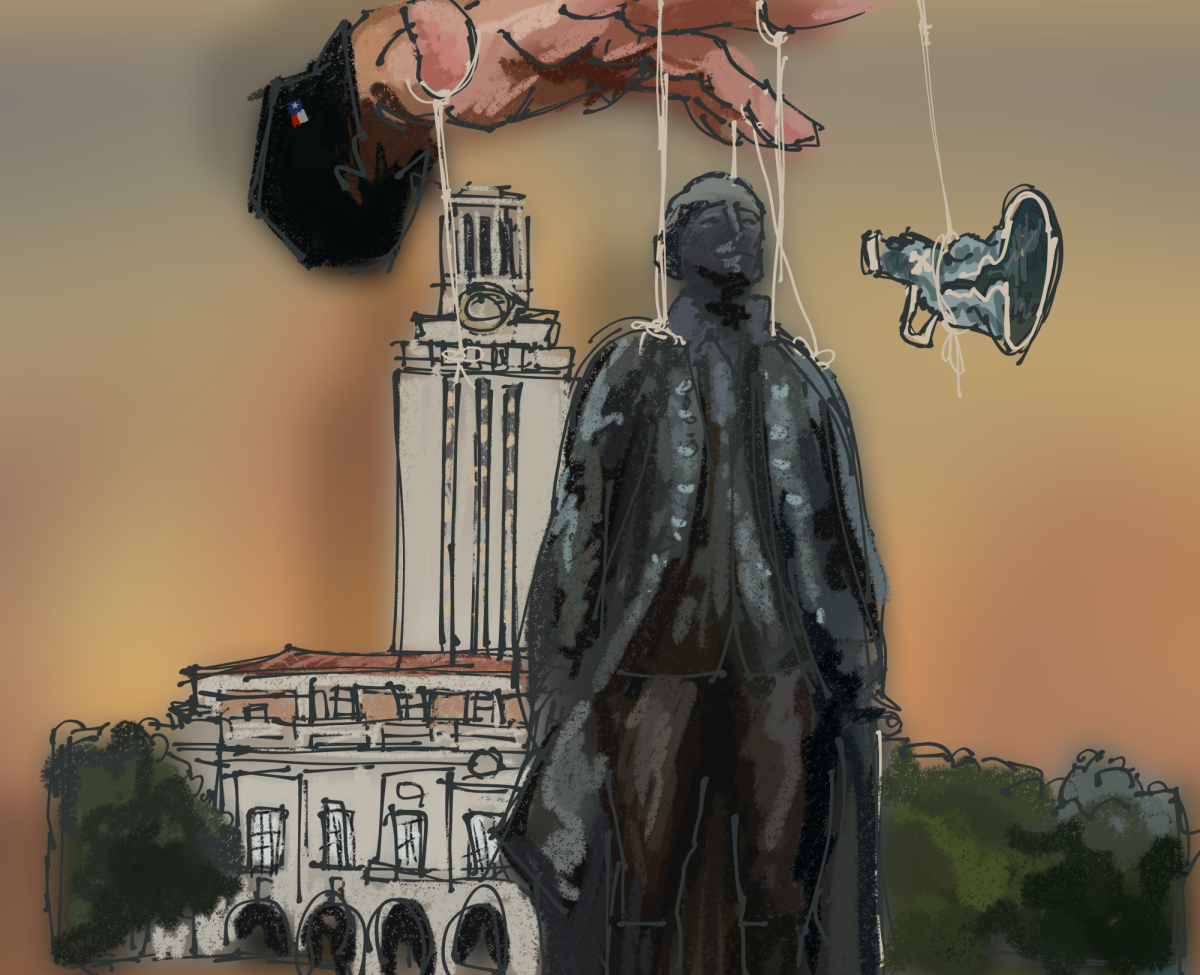In late March, Jordan — who requested for us not to use his real name — submitted an application to receive financial assistance from UT’s Student Emergency Fund, which is designed to help students facing hardship cover essential expenses such as utility bills, school supplies and medication, among other things. As a result of the COVID-19 pandemic, both of his parents were out of work, and with a broken laptop, Jordan would not be able to keep up with online classes.
He still has not received the money he requested. In the time since he first requested assistance, Jordan has had to max out a credit card to fix his laptop because he said there had been weeks where the status of his case was unclear.
Jordan is not the only student facing this dilemma. In the weeks following President Gregory Fenves’ announcement that campus would be closed for the rest of the semester, stories began to emerge about lengthy wait times for funds from the SEF and students being left in the dark about the status of their request.
For an organization intended to help students in crisis, this is unacceptable.
According to Sara Kennedy, director of strategic and executive communications for the Dean of Students, the SEF has distributed over $1 million to more than 1,300 students in need since it was announced that campus would close — an astronomical number considering that last year, the fund only distributed $36,000. The previous $300 limit on assistance has been lifted, and student emergency funds can now also be used for rent. Additionally, to date, over $100,000 has been allocated for funding student technology needs, including 521 laptops.
To compensate for the spike in applications, Kennedy said that Student Emergency Services, which oversees the SEF, has more than doubled the number of caseworkers processing requests to 25. Kennedy noted that as of April 8, cases were being processed through the Office of the Dean of Students in their average pre-COVID time of 24 to 48 hours.
Why, then, has it taken so long to process so many students’ requests?
Aside from the standard bureaucracy of processing financial requests and payments, the biggest culprit seems to be the late addition and training of new caseworkers for the SEF.
According to Kennedy, the absolute earliest that new caseworkers for Student Emergency Services started training would have been the first week of spring break — as applications had likely already begun to flood in. It’s unclear how long it took the new caseworkers to begin processing applications, but this delay during the most critical week of this crisis likely caused a major pileup of cases. President Fenves told the Texan that the University had been planning its COVID-19 response for weeks before spring break. Why wasn’t adequately preparing Student Emergency Services part of that plan?
Out of those who requested emergency funds for rent, utilities or other time-sensitive bills, it is unclear how many received them on time. Students like Jordan, who needed the emergency funds to get materials for online classes, could now be hopelessly behind or in even greater debt. When the Student Emergency Fund is unprepared to support large numbers of students when they need it the most, it is ultimately failing to protect the student body in times of emergency.
In the short term, the Student Emergency Fund must be more transparent with students about when they can expect to receive financial assistance. Students applying for SEF funds in anticipation of paying rent or other time-sensitive expenses must be confident they will receive funding in time. For students who have already requested funding, increased communication with caseworkers would make a big difference to those who feel stranded by an entity that’s supposed to help them. This could be as simple as an automated email system that periodically notifies students when their request has progressed to subsequent stages of the evaluation process.
In the long term, the SEF must be better prepared for a crisis. This is only the first wave of what could be over 18 months of this pandemic. As COVID-19 cases increase, so will the hardships. While it’s difficult to cut down legal-based financial hurdles, accelerating the processing of cases is much easier. When the next wave hits, the SEF must have more caseworkers ready to process another spike in applications, and expedite the training of new ones.
For now, this is our new normal. UT and the Student Emergency Fund must become more transparent with their request processing system and be more prepared for when the next wave of the pandemic hits the UT community. Like many of us, the Student Emergency Fund wasn’t ready for this pandemic — but it needed to be.
The editorial board is composed of associate editors Abhirupa Dasgupta, Hannah Lopez, Sanika Nayak, Abby Springs and editor-in-chief Spencer Buckner.





















